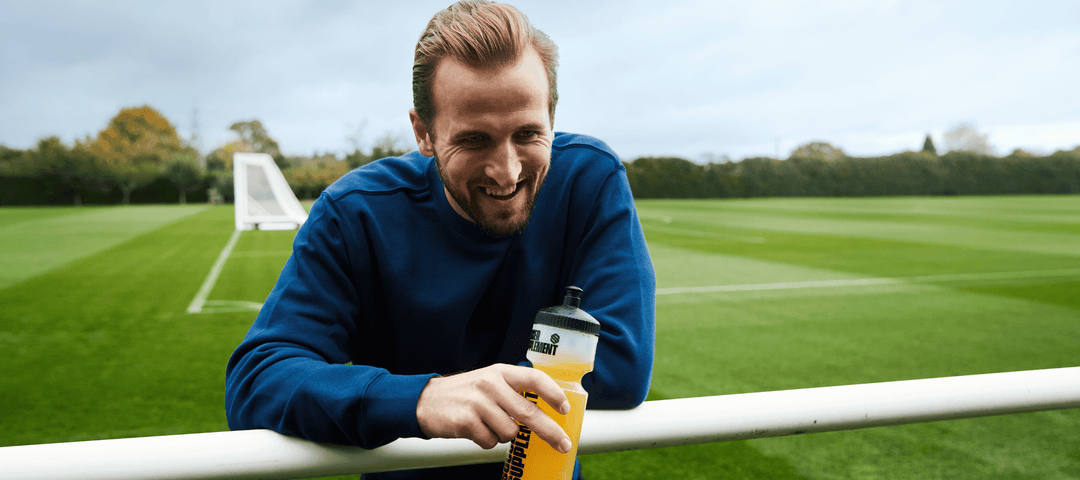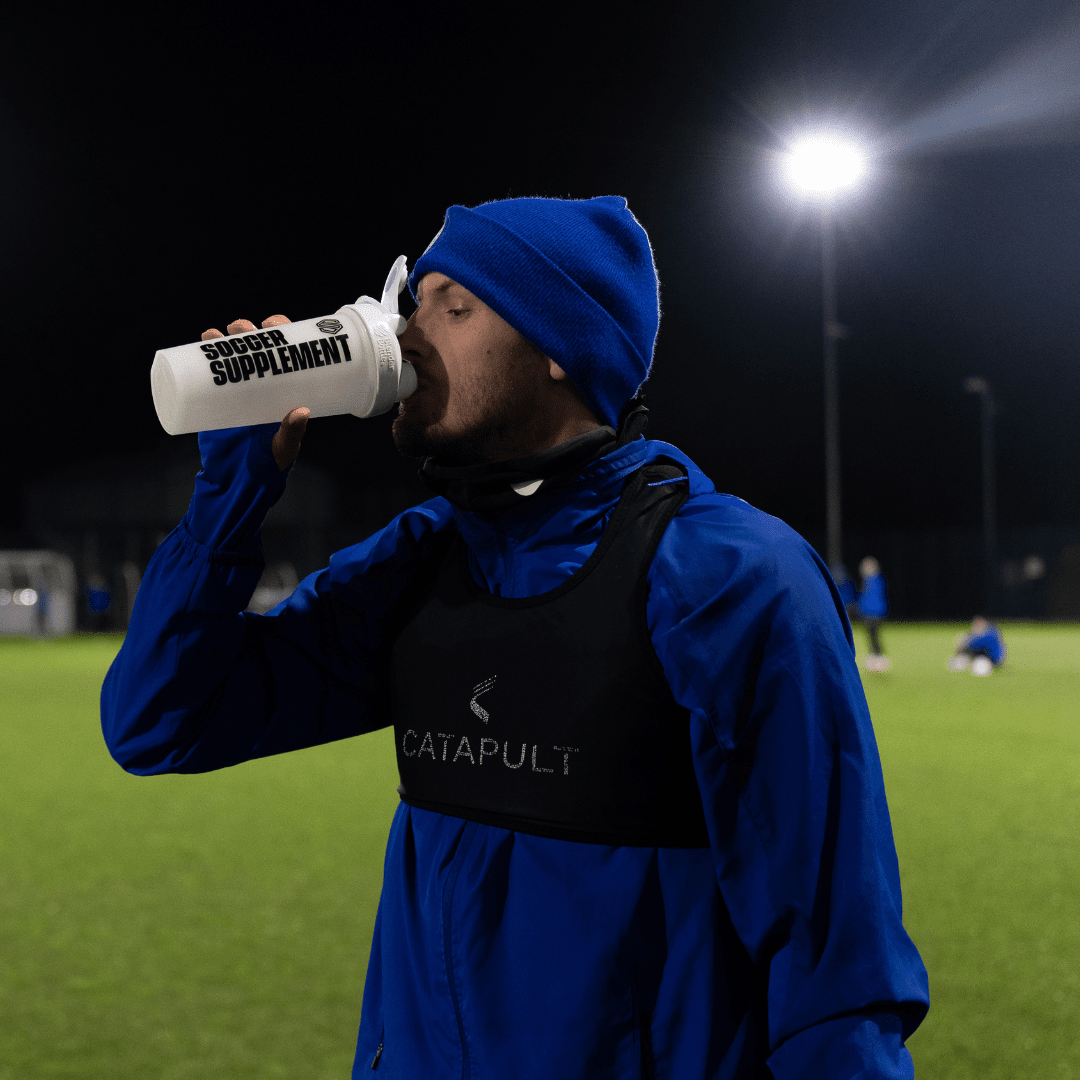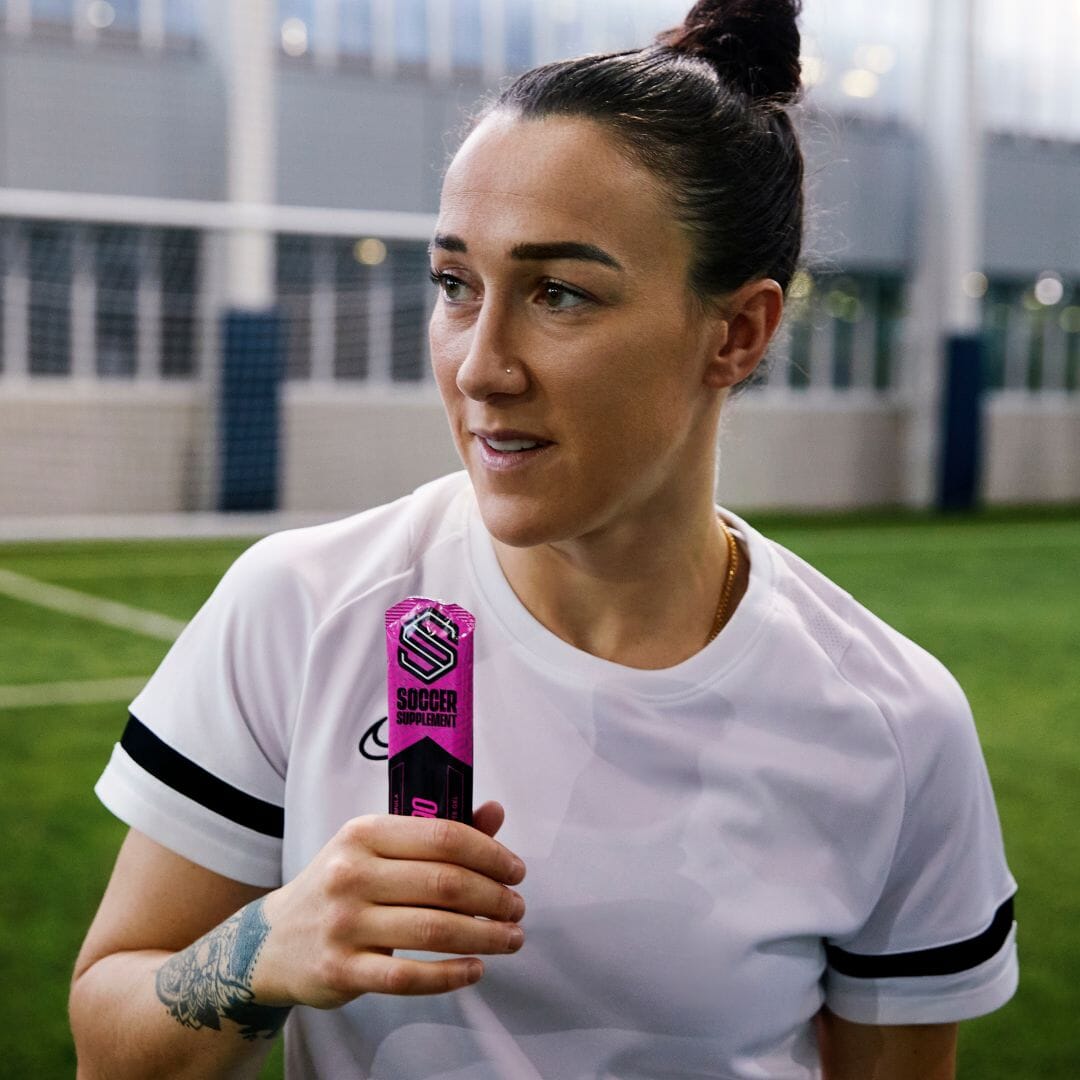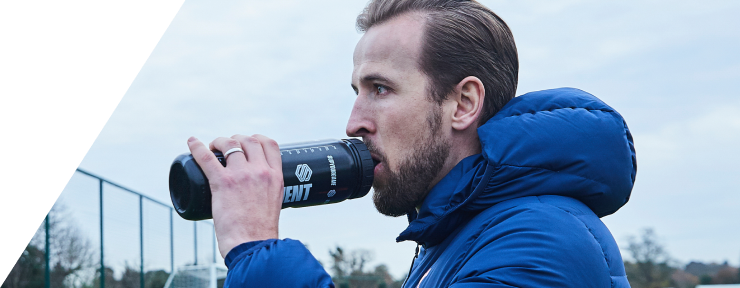Download Your FREE 4 Week Football Training Guide now.

It’s often said that it takes 10,000 hours to achieve greatness in any discipline, whether it’s piano, golf or, in our case, football. For football, you might even need more than 10,000 hours. Top professional footballers have undoubtedly already put their hours in with an average of four to six hours of training every day.
The hours we see top players on the pitch are a fraction of the time spent on the training ground and in the gym. Achieving greatness in the beautiful game requires hard work and discipline regardless of whether you’re playing Super Saturday or Sunday league.
Training is crucial for footballers who want to reach their potential and up their game. So whether you’re a player, a coach or a parent, you need to know everything you can about how to train for football. That’s why we’ve put together this complete football training guide; it’ll show you when to train, how often and give you some football training drills to try out.
Why We Need to Train for Football
If you’re looking to improve your game, there’s no option but to train. There are no two ways around it; if you want to develop as a player, you need to hit the training ground hard. Turning up at a match having not done anything since the last game is a recipe for mediocrity at best, an embarrassing defeat at worst.
Training keeps you on top of your game, it keeps you physically fit enough to stay on the pitch for 90 minutes, but it also helps maintain the right mentality. Training enables you to improve any areas of weakness and top up areas of strength so that you’re ready for your next fixture.
The old adage “use it or lose it” applies to football. If you’re not constantly looking for ways to improve or maintain your physical, technical and mental abilities, you’re standing still or, worse, moving backwards.
What is Football Training?
Football training divides into three broad but distinct branches: physical, technical and tactical. All three football training branches complement each other and are vital for the success of both the individual and the whole team.
Physical Football Training
Physical training focuses on building the engine that powers you through matches. It gives you the ability to run, jump and shoot as fast and powerfully as you can. To achieve the best results from physical training, you’ll need to combine cardio training and resistance training.
Cardio will involve running, cycling, HIIT and the work you put in on the training ground. Resistance training involves weightlifting (compound and isolation movements) and bodyweight exercises. Beyond the training itself, you’ll need to focus on recovery, flexibility and mobility.
You can supplement your training sessions with nutrition designed for your precise needs as a footballer. The Soccer Supplement Starter Pack is a great place to start. A combination of energy gels and hydration for just £9.95.
Technical Football Training
Technical training is about developing your technical skills on the pitch. It generally includes dribbling, passing, shooting, heading and tackling. But it can also be position-specific, particularly for goalkeepers who need to develop diving, catching and throwing skills. You can develop some skills on your own, like footwork and agility, but some skills — such as crossing and tackling — need training as a team.
Tactical Football Training
Tactical training is what makes a team stand out from the crowd. It’s the theoretical side of the game that focuses on set pieces, formations and the tactics needed for different attacking and defensive scenarios. Tactical training is usually worked on as a team and will either occur on the training ground or in a classroom environment.
At lower levels, tactical training will focus on your own team’s improvement and teamwork. But at the high levels, emphasis is placed on video analysis of your own squad and the opposition to find weaknesses and the best way to play against them.

How Often Should You Train?
There’s no perfect timetable for football training. Every player and club will have their own training schedule from the Premier League® to the Sunday league. Real Madrid players train for four to five hours a day, but most lower league clubs and amateur players won’t have that much time to prepare.
If you’re an amateur player with a job, family and social life, it’s unlikely that you’ll be able to spend that long training or even have the energy to do it properly. Luckily, you can still massively improve your game in just a fraction of the time professionals spend training.
Most amateur teams will have one or two team sessions a week throughout the season that cover the tactical and technical training and some of the physical. But if you really want to up your game, you’ll need to use your own time. The majority of your fitness, strength, flexibility and agility training will be down to you.
There’s no single schedule for football training, but we’ve put together an example schedule for a keen amateur footballer following a Sunday match:
Monday: Light recovery swim
Tuesday: Strength training followed by HIIT
Wednesday: Team training sessions
Thursday: Strength training followed by HIIT
Friday: Day off
Saturday: Light cardio and stretching
Sunday: Matchday
Did you notice the day off? It’s a vital part of any training programme. Even the fittest, most enthusiastic player needs to find the balance between effective training and overtraining.
Overtraining can do far more harm than good. Too much of it can cause injury and fatigue and put you out of action for the big game on Sunday. So it’s vital to ensure that you have enough time for recovery in your training schedule and set aside rest periods. Knowing when you need to break is just as important as anything else.
You’ll also need to focus on your nutritional intake. Good nutrition is imperative for a quick recovery following a match or training session. A well-balanced diet will ensure your body has everything it needs to repair and be ready for the next session. A great way to make sure you’ve got enough nutrition to recover correctly is to use a recovery drink like Recover90. It contains a blend of protein, carbohydrates and electrolytes that replenish the body and kick off the recovery process.
What Football Training Equipment Do You Need?
Just having a good pair of boots and a ball isn’t going to cut it if you’re looking to up your game. The equipment you need will vary depending on whether you’re buying for a team training session or individual training. If you’re buying for a team session, you’ll have a long shopping list, but some kitbag essentials always come in handy for football training drills and practice matches, such as:
- Football Cones
- Bibs
- Agility ladders
- Hurdles
- Slalom poles
- Ball rebounders
- An ample supply of footballs and a pump — one or two balls won’t be enough, especially if you’ve got enthusiastic strikers regularly lodging balls in the local wildlife.
Beyond team training equipment, every player will also need adequate clothing and personal equipment, such as:
- Shorts
- Shirt
- Socks
- Shin pads
- Football boots
- Goalkeeper gloves.
If you’re looking to train outside of team sessions, you’ll also need to get some equipment. The easiest way to gain access to the best gear is to join a local gym. The gym will have cardio machines like treadmills, bikes and rowing machines, and strength training equipment that you need to work out properly.
If you’re unable to join the gym or want to train at home, you’ll need to invest in some dumbbells, kettlebells or sandbags. You may also want to consider an indoor bike, treadmill or rowing machine.
How Long Should Football Training Last?
Much like how often you should train, there’s no one answer for how long a training session should last. The shortest answer is: it depends. Most of the time, training shouldn’t last too long, especially if you are training most days. Spending too long training can be damaging for your health, so it’s wise not to overdo it. But, each type of training takes a different amount of time.
Usually, a traditional team training session that you, your coach or a teammate has organised will last about 90 minutes to two hours. Typically, this will involve a warm-up, tactical and technical training, a practice match and a cool down to finish.
But if you’re training alone, you can complete strength training or a cardio session in less than an hour. Some sessions, like HIIT sessions, on a treadmill or exercise bike, only take about 20 minutes. The length of time you train doesn’t directly affect the session’s effectiveness; think quality, not quantity.
How to Train for Football
As you’ve probably gathered by now, there are a lot of different ways to train for football. In the lower and amateur leagues, cardio, strength and mobility training will usually be the player’s responsibility. While technical and tactical training will take place as a team under the watchful eye of the coach.
Technical sessions should be much more than just a kick-around. They should be deliberately structured to ensure the team's time together is spent developing and working on any problem areas.
How to Train for Football: Example Training Session
Every team will have its own way to train, but many squads follow a classic training format and then develop it to suit their needs.
Warm-up (10 Minutes)
Every single training session should start with a warm-up. Ignoring the warm-up is a surefire way to get an injury. A warm-up will prepare your body and mind for the activities to follow. A team will warm up together most of the time, but players might need to work independently for specific activities like foam rolling a tight muscle.
During the main warm-up, most clubs will follow the RAMP (Raise, Activate, Mobilise and Potentiate). This involves first raising your heart rate, blood flow and core temperature with light movements like running or skipping. Next, you activate and mobilise key lower body muscles with squats, lunges and other stretching exercises.
The final part of warming-up is to potentiate or prime your nervous system for speed. You do this by building up the pace of the session by practising sprinting, jumping and fast feet.
Main Training Session (30 Minutes)
After a successful warm-up, you and your team will be ready to take on the main training session. Regardless of the level you play at, the session should have a clear goal, an aspect of the game that your team needs to develop and improve.
One of the biggest mistakes that smaller teams make in training sessions is to tackle too much in one session. Rather than addressing lots at once, focus on a single issue like:
- Passing
- Crossing
- Ball control
- Shooting
- Set piece
Game Situation (30 Minutes)
Once you and the team have taken the time to focus on an area of improvement, it’s time to put your skills to the test. This will be a short session to practice and continue developing the skills from the main session. This session is normally a small-sided game, a full-team practice match or a series of 1v1s.
Cool Down (5 Minutes)
This is probably the most overlooked part of a training session by many players, but it’s a vital aspect of training and saves you from cramp and potential dizziness. Cooling down allows you to lower your heart rate and breathing and relax your body. A cool-down doesn’t need to be extensive and can be as simple as a lap or two around the pitch at a light pace. After that, finish with some static stretching, foam rolling and then hit the showers.

Football Training Drills
Football training drills are an essential part of any successful training session. They are used by teams around the world, from kids leagues to the Champions League. Football training drills focus on improving certain physical, technical and tactical aspects of your game.
Training drills can focus on building speed or specific ball skills like dribbling, passing and shooting. New drills are developed almost every day on training grounds worldwide, but there are some tried and tested football training drill favourites many clubs use.
We’ve put together an example of a training drill that focuses on shooting; it gives you details of what you need and how to get the most from football training drills.
Shooting Drill
Finishing opportunities is a vital part of football. Without it, all the team’s hard work will be in vain. This training drill helps you hone your shooting so that you can fire it home next time you’re in front of the goal.
Number of players: 4-6
Instructions:
- Attacking players line up just outside of the penalty box with a ball each.
- One of the attacking players is chosen as the “wall passer”.
- Attackers pass to the “wall passer”, receive the ball back and shoot.
- Players take turns as the “wall passer”.
- New rules can be added as drill develops, i.e. using their weak foot to shoot.
Nutrition for Football Training
Nailing your nutrition is as essential as training for football. A good nutritious diet should include:
- Fresh fruit
- Vegetables
- Lean protein (e.g. chicken, tofu, greek yoghurt)
- Healthy fats (e.g. avocado, eggs, seeds, nuts)
- Complex carbohydrates ( e.g. peas, beans, whole grains).
Once you’ve got a balanced diet on point (as near as you can), you can make great use of supplements to enhance your focus, boost your endurance and speed up recovery.
In the hour before a training session, you can use an energy gel, like Fuel90®. The gel contains electrolytes, which will keep you going throughout the training session. Energy gels are used by top teams and players worldwide because they deliver a boost of energy and hydration and help you squeeze the most out of a training session.
Recovery is crucial if you want to be ready to go again the next day. Regardless of whether you’ve spent a few hours training with the squad or working out alone, you must focus on recovery. Protein shakes, like Whey90® or Vegan Protein, with some fresh berries, after training gives your muscles the tools they need to start repairing.
Beyond nutrition and supplements, hydration is absolutely essential. You’ll need to drink about two litres of water every day, which is around eight glasses. You’ll need to add an extra half litre for every hour of activity to avoid dehydration. It’s also worth considering adding electrolytes, like Hydrate90®, to boost your hydration and prevent your muscles from cramping.
Putting It All into Practice
As our football training guide has shown, football training is far more than going for a kick around with your teammates a couple of times a week. It requires hard work and dedication.
You’ll need to dedicate time over your week to work on your game’s physical, technical, and tactical aspects. But the good news is that it will be worth it, and it doesn’t need to be all that complicated. You’ll start seeing results fairly quickly, providing you push yourself, mix up your routine and don’t overdo it.
If you want to supplement you football training efforts with nutrition targeted for your needs then check out our Soccer Supplement Starter Pack for just £9.95.
Download Your FREE 4 Week Football Training Guide now.

Click here to shop our range of elite football nutrition
Updated April 2022









